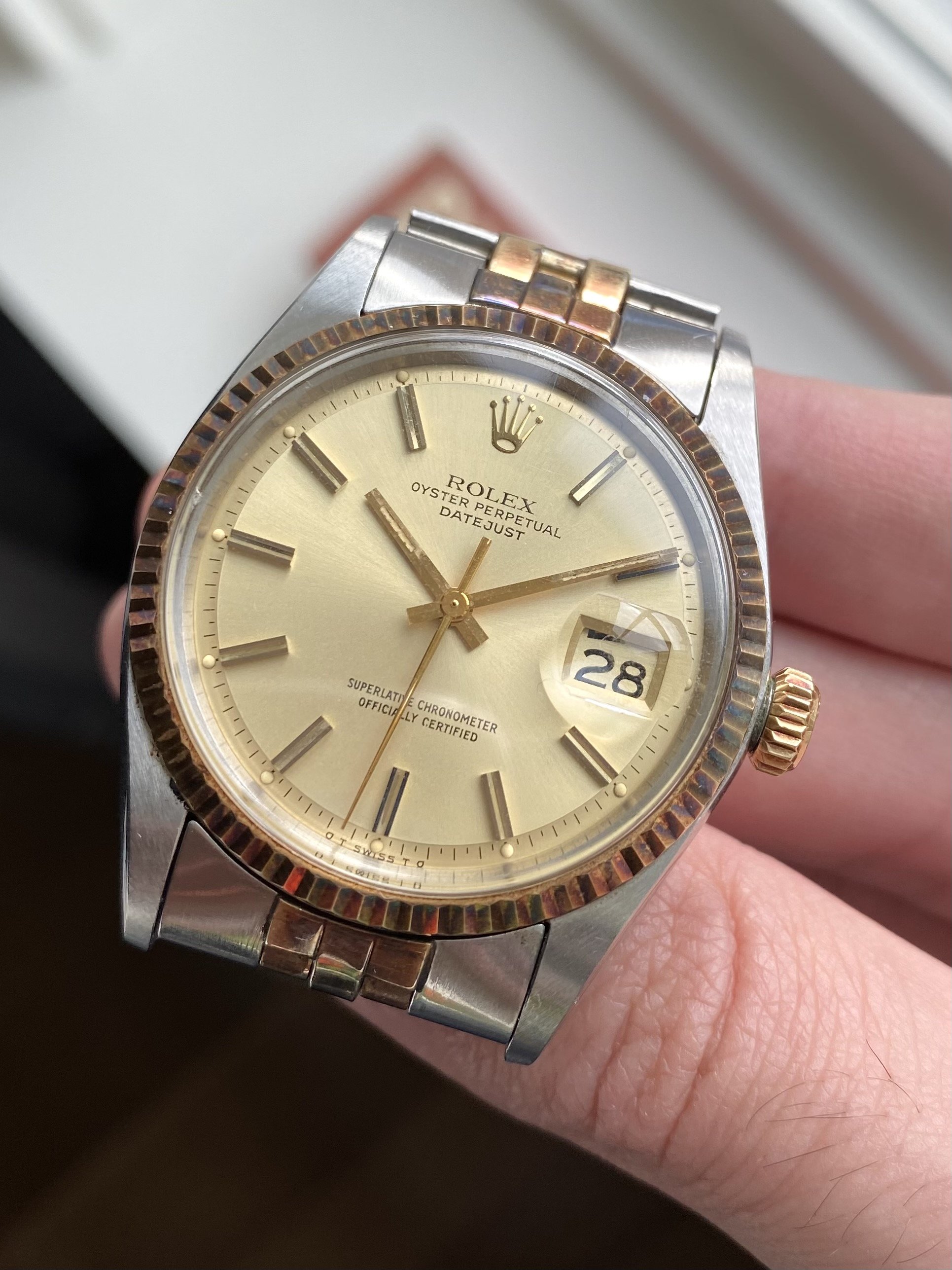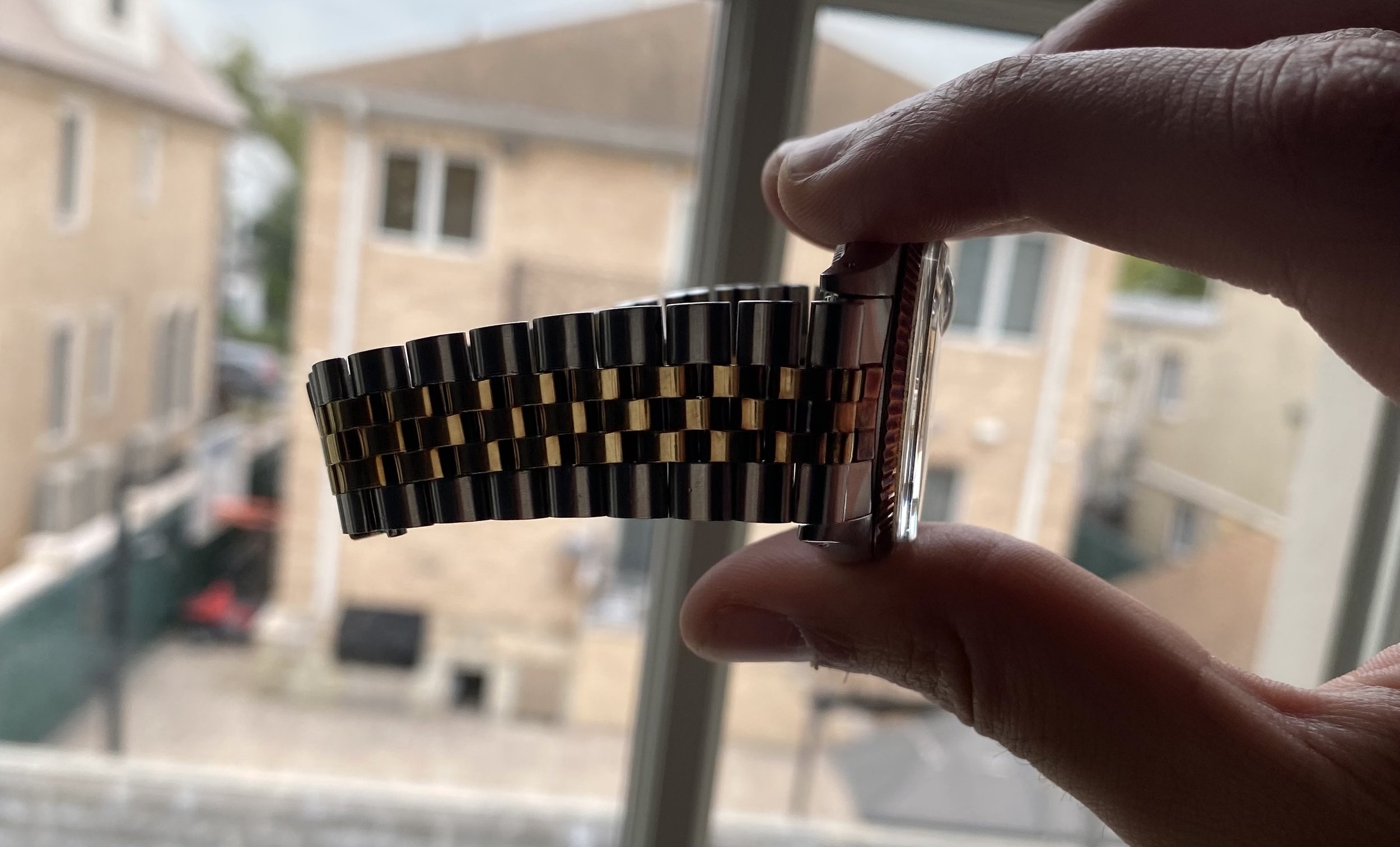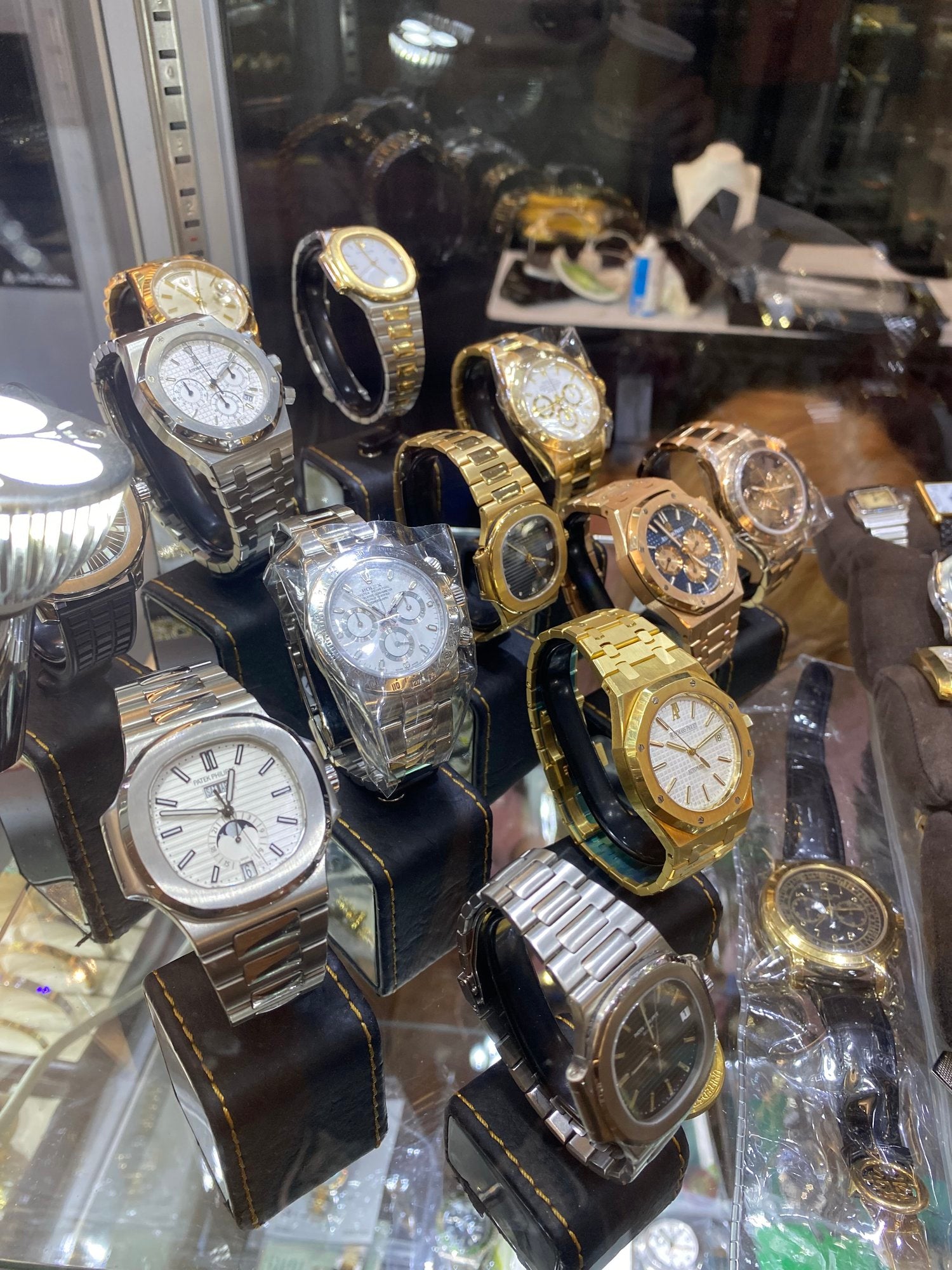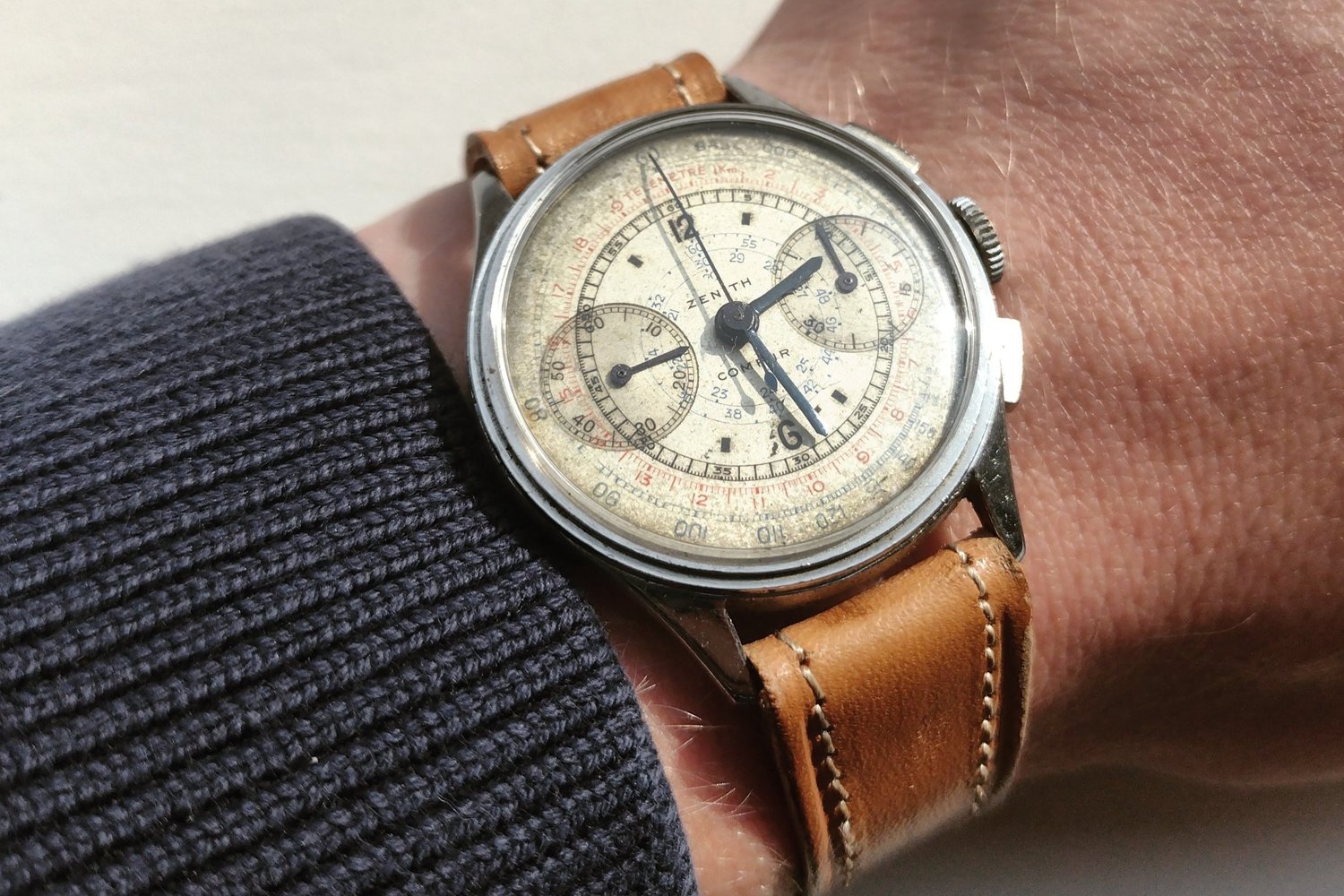The Safe Queen: Two-tone Rolex Datejust ref. 1601
NOS (new old stock) is a term that gets thrown around a lot by dealers and collectors alike — but rarely is it this true.

Often, condition is relative, depending on a buyer and their expectations. There is no quantitative way to measure a watch’s condition (at least not yet!). As more buyers and sellers enter the preowned/vintage watch market, the importance of condition only increases.
Desirability, demand, and taste are bigger factors or motivations when it comes to a buyer's decision, but a more thoughtful collector must consider a watch’s condition, especially in vintage. As years or decades pass, the concept and value of condition in watches will change exponentially as there will be fewer quality examples out in the market as collectors will keep them in their collections.
“New Old Stock” didn’t really exist decades ago as “watch collecting” didn’t exist either, or at least not to this extent. For example, a Rolex Datejust 1601 in great condition could be a $1000-2000 difference in the upcoming years, as opposed to just $500-1000, because there will just be fewer quality examples circulating. The gap only gets bigger with the more expensive pieces.

I got lucky with this two tone Rolex Datejust 1601 with a champagne sigma dial. Yes, it's another Datejust. Again, it's not the watch that's necessarily special, but rather the natural state that it's in. The watch seems absolutely untouched, with no nicks or marks on the case or bracelet. The bracelet is as tight as the day it was purchased in the 70s.
The most interesting (and noticeable) thing about the watch is the patina on the gold. The gold bezel and center links on the bracelet naturally turned purple. It seems as if someone kept the watch in a safe and hadn’t pulled it out for a LONG time, hence the tarnishing. When base metals alloyed with gold react to oxygen, they can discolor or tarnish in colourful patterns.
Also, oxidation takes place depending on the type and manufacturing process involved in making the gold. Of course, this aging process wouldn’t occur at all if Rolex used 24k gold as its pure and not mixed with any other alloys.

In general, 24k gold isn’t used in watchmaking as it's too delicate and malleable to use. 18k gold (or 14k gold, used back in the day) is more durable and practical for everyday use. Getting off the technical tangent, the oxidation left a beautiful mark on its prey. Whether you love or hate the look, you have to admit that it’s distinctive. The purple effect is definitely an acquired taste, but for those looking for something different in terms of aesthetic and condition, it's perfect.
Who knows whether someone intentionally put this piece away in a closet or safe where it hasn’t seen sunlight, but I’m glad they did. To be honest, I initially didn’t like the look, but it grew on me as I liked the shimmering purple bezel in the light. A great conversation starter if I had to add — this thing gets LOOKS. And of course, the shameless plug, this Datejust and so many more are available in the shop.




